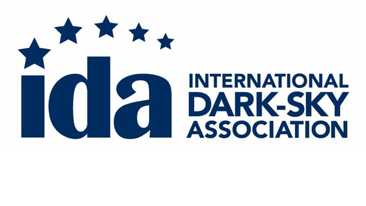Insights > Creating Inclusive, Complete Communities

Creating Inclusive, Complete Communities
Evolving Toward Inclusive Cities: A Series from Caddis Collaborative
Post #3: Creating Inclusive, Complete Communities
If we move away from racist and classist exclusionary housing practices and begin to embrace inclusionary policies, cities can adapt to be more livable for everybody and more inclusive to those who are currently excluded in our cities and towns.
Thoughtful urban design – freed from the constraints of exclusionary policies – can lead to truly democratic spaces where no one is left behind. As the pioneering urban design architect David Lewis said, “Work with citizens to resolve the most urgent problems in our society…. Enfranchise the unenfranchised and disenfranchised, which is the poor people and the old people and the people swept to one side.” In other words, include everyone in the urban design process.
In addition to changing zoning laws so that more types of denser housing are permissible and encouraged, such regulations can also be updated to allow mixed uses. What if our neighborhoods allowed in-home daycares and home-based cottage industries (which might mean a mix of residential and commercial zoning)? What if more flexible zoning allowed for more gathering places like coffee shops and corner watering holes near residential areas? Monotonous single-family zoning – with services located a car’s drive away – would give way to walkability and community resilience.
A core vision Caddis and many other urban designers are now working toward is that of the “15-minute neighborhood.” Also known as a “complete neighborhood,” this is a neighborhood in which you can access all of your day-to-day needs within a 15-minute walk of your home. You don’t need to get in a car to take care of your most basic needs.
Key to the 15-minute neighborhood is the idea that such communities should house enough people – and all kinds of people. The neighborhood in which Caddis Collaborative is located – Boulder, Colorado’s Holiday Neighborhood – is a step in the right direction. It includes single-family housing, condos, apartments, duplexes, and triplexes. Its residents are economically diverse, with Habitat for Humanity units blended into the neighborhood with high-end market rate units. Live/work units allow artists, architects, writers, and other entrepreneurs to work where they live. And opportunities to play – from the community’s park to coffee shops and restaurants – are located within very easy walking distance of homes.
That’s the future of sustainable, high-quality cities – places like Paris, Singapore, the Netherlands, and Ottawa (where this approach is called “intensification”). With a range of housing types and with more density than is possible with single-family zoning, you can create highly livable, enjoyable, income- and background-inclusive neighborhoods. The idea, said Minneapolis planner Paul Mogush, is to “put the stuff closer together so it’s easier to get to the stuff.”
Inclusionary housing, mixed-use zoning, 15-minute neighborhoods – these are all keys to the inclusive cities Caddis Collaborative envisions. With our base in Colorado, Caddis feels this keenly: it’s particularly important in the Western United States. Western cities and towns are all seeing increased pressure as more and more people work remotely. From “amenity migrants” to the “Zoom boom,” these cities and towns face the problem of suffering ever more extreme exacerbations of well-known problems. Turned another way, these communities have the opportunity to take this new burst of energy and do something positive with it.
More from Our Series on Evolving Toward Inclusive Cities
Want to learn more about how the United States might evolve toward more inclusive cities? Join Caddis Collaborative as we explore these issues. Learning about these issues is one step toward a cure. Check out our other posts in this series:
- Post #1: The Air We Breathe Isn’t “Natural”
- Post #2: Inclusionary Zoning and Housing Justice
- Post #3: Creating Inclusive, Complete Communities
- Post #4: A Vision for Change: Tulsa on the Move
- Post #5: American Cities Can Learn and Evolve
For a list of additional resources, check out the links included at the end of Post #5: American Cities Can Learn and Evolve
Recent Posts
- What Brings Us Joy: Julian Loves Being Creative January 21, 2025
- What Brings Us Joy: Chad Practices Meditation January 14, 2025
- What We’re Reading: Morgan Recommends “The Midnight Library” January 7, 2025
- Welcome 6 of 6: Settling In: Living in Community the First Year December 16, 2024
- Welcome 5 of 6: Orientation: Living in Community the First Few Months December 16, 2024
Other Relevant Insights






















We’re proud to be in good company.
We love being part of the community that’s bringing good design to good people. That’s why we contribute to and participate in these organizations – so we can bring the best emerging ideas to you.
Get In Touch
Let us bring your vision to life.
A beautiful space that fits your best life. A sustainable build. A fun and easy design process. We’re with you every step of the way – from the beginning dream to the finished project!



